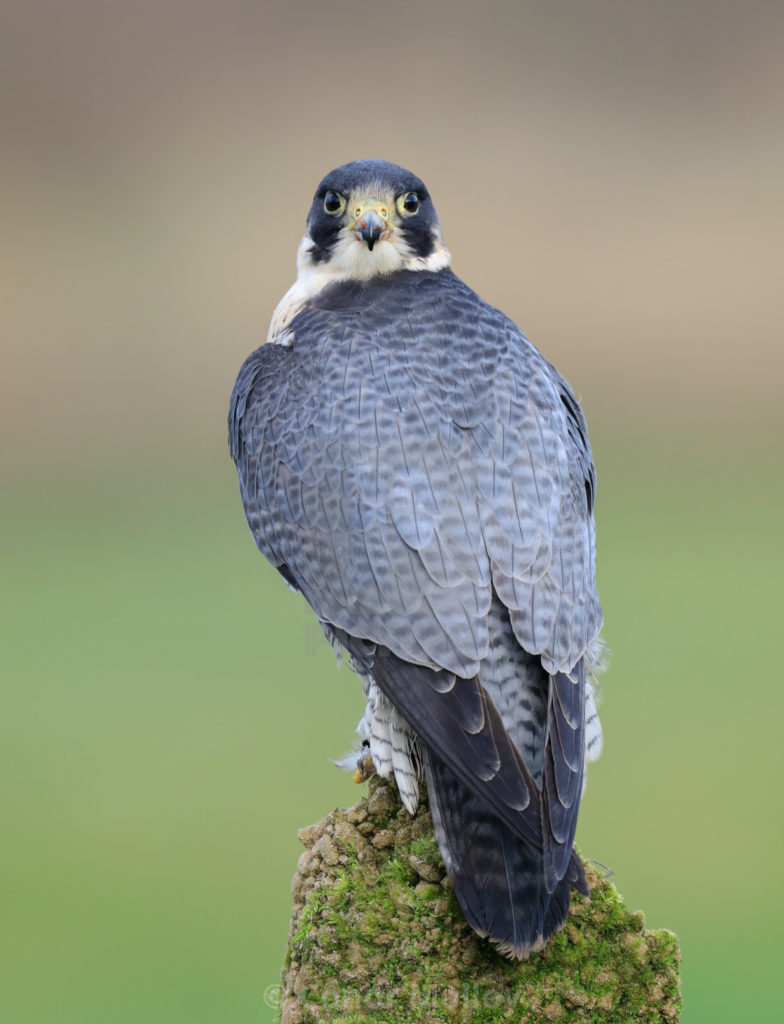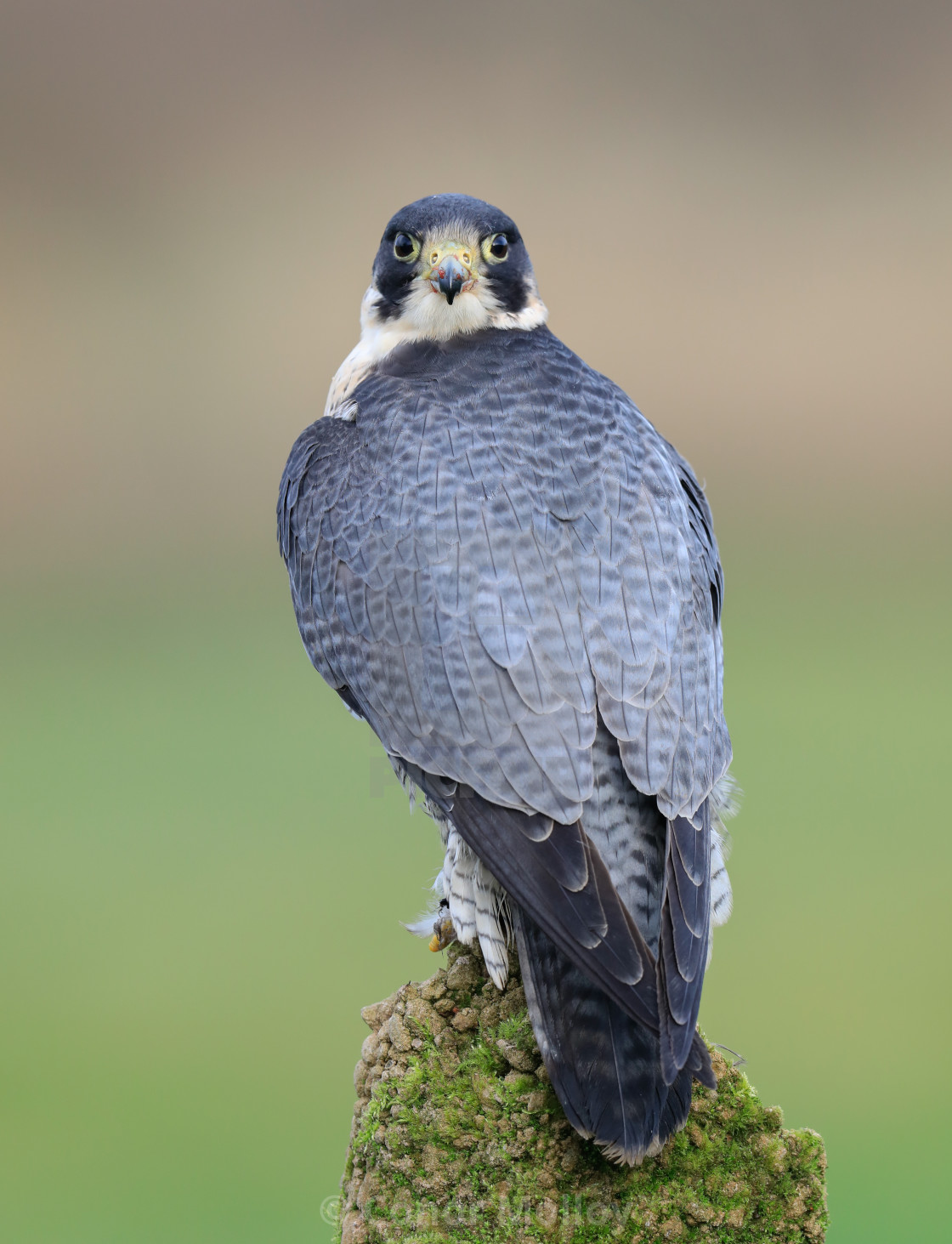ANIMAL: Peregrine Falcon Falco peregrinus Type of Animal: Falcon Habitat: Nest in high cliffs, but if that’s not available, they’ll nest on top of bridges & tall buildings. Can be found in mountainous areas, urban areas, suburbs, deserts, tundra, grasslands, semi-desert, coastal areas, scrubland, mudflats, lake/river edges, savannah, forests, wetlands, among many others Location(s): Found almost worldwide except Antarctica, New Zealand, many tropical forests, extremely high mountains, & extreme polar regions Appearance: Blue-black to slate grey, w/ black wingtips, black beak/claws w/ yellow nose/feet, female larger than male Food/Diet: Bats, songbirds, pigeons, doves, hummingbirds, gulls, corvids, woodpeckers, grebes, ibis, herons, egrets, cranes, swans, geese, ducks, cuckoos, rails, swifts, kestrel, quail, shorebirds, seabirds, terns, rats, mice, voles, rabbits, hares, shrews, squirrels, insects, ptarmigans, chickens, fish, grouse, snakes, lizards, smaller hawks, smaller falcons, carrion, smaller owls Status in Wild: Stable Conservation: Once endangered in U.S. in mid 20th century due to pesticides such as DDT. Since DDT banned in 1970’s, populations have rebounded significantly along w/ many other animal species, such as Bald Eagles. Taken off U.S. Endangered Species List in 1998. Lifestyle: Monogamous pairs or solitary Additional Info: Called: Male-Tiercel Female-Falcon Young-Eyas Group-Pair Weight: Male-0.73-2.2 lbs Female-1.13-3.3 lbs Young-6.4 oz Gestation: 1 month Height: Male-1.18-1.6 ft Female-1.6-2 ft Body Length: Male-1.18-1.6 ft Female-1.6-2 ft Life Span: 15 years in wild, up to 20 years in captivity Tail Length: Male-5.112 in Female-7.476 in Main predators of adults are bears, larger canids, larger felines, & great horned owls. Gyrfalcons, other large owls, eagles, raccoons, foxes, smaller dogs, large hawks, small cats, martens, & snakes prey on young. Extremely territorial during breeding/nesting season, battles between resident pairs & intruders often fatal. Usually return to these same territories every year from late March-May in N. Hemisphere, often staying during the summer and leaving in early fall. Chicks fledge after about 2 months. Name comes from Latin word peregrinus, meaning “to wander.” Fun Fact(s): One of the fastest animals in the world, reaching speeds of up to 200 mph. They’ve been known to attack larger animals, including humans, during breeding/nesting season. It’s been used in falconry for over 3,000 years, beginning w/ C. Asian nomads.

